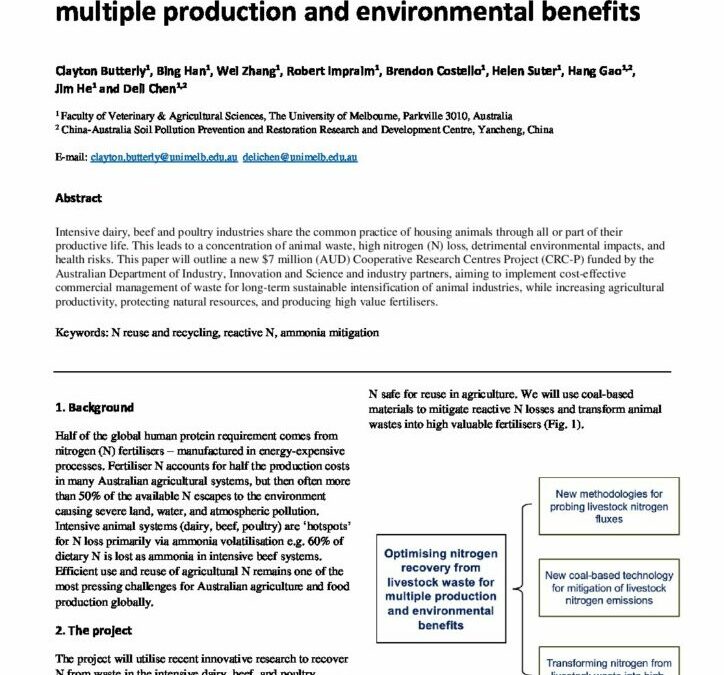Optimising N recovery from livestock waste for multiple production and environmental benefits

Intensive dairy, beef and poultry industries share the common practice of housing animals through all or part of their productive life. This leads to a concentration of animal waste, high nitrogen (N) loss, detrimental environmental impacts, and health risks. This paper will outline a new $7 million (AUD) Cooperative Research Centres Project (CRC-P) funded by the Australian Department of Industry, Innovation and Science and industry partners, aiming to implement cost-effective commercial management of waste for long-term sustainable intensification of animal industries, while increasing agricultural productivity, protecting natural resources, and producing high value fertilisers.
Half of the global human protein requirement comes from nitrogen (N) fertilisers – manufactured in energy-expensive processes. Fertiliser N accounts for half the production costs in many Australian agricultural systems, but then often more than 50% of the available N escapes to the environment causing severe land, water, and atmospheric pollution. Intensive animal systems (dairy, beef, poultry) are ‘hotspots’ for N loss primarily via ammonia volatilisation e.g. 60% of dietary N is lost as ammonia in intensive beef systems. Efficient use and reuse of agricultural N remains one of the most pressing challenges for Australian agriculture and food production globally.
